The composition will be essential if we want the videos and photography that we later want to edit in Lightroom to come first with a certain character. We can always modify or improve our audiovisual files with the editing tools, but the more attention we pay when taking and taking photos and videos, the better result we can achieve. If we take a blurry photograph or video, we can try to rectify it in post-editing, but it will not have the same result as having achieved a clear audiovisual element from the beginning..
When composing we must take into account how we identify and place the different elements within our photograph or video following a frame. Normally we will do this in order to convey a certain message or emotion to the receiver. The same elements with different compositions can attract different feelings, emotions and even stories for the same person.
Undoubtedly, there are three essential phases to take into account when taking good photographs and videos:
Process of making photos and videos
The process to carry out our photography and video sessions can be organized in the following stages:
- Preproduction. This phase is the initial one and it will be here where the photography and video session will be planned. It can include types of plans, locations, estimated time, material...
- Production. Here we would talk about the realization phase where we would be doing the photography session or recording based on everything that we have been preparing in the Pre-production phase. There may be some change or unforeseen event but we will always try to stick to the initial plan as a basic guide.
- Post production and editing. This phase is the one that corresponds to the editing of our photographs and videos, giving the final result of our finished photographs or videos.
When we already have a well-defined planning of our photography or video session, the next thing is to know what to take into account to later create the content and that what reaches our editing software has good quality. That is why we are going to see different rules and necessary elements when it comes to composing quality photography and video..
1 Basic rules of composition
As we have said, the composition is the key step when taking photography and video since we will be placing each of the elements that we choose within a specific frame and at a certain moment. This portion of reality will be the story that we want to tell in a certain way and that will generate unique sensations. Depending on which rule or law we use to compose, we will achieve one result or another and that is why we advise you to always try and try to see how with different settings and modes we can achieve completely different photos and videos.
We are going to explain some widely used laws or compositional resources that you can use to create your images and videos and thus improve their aesthetics.
The rule of thirds
It is the quintessential rule of composition and consists of centering the focus of attention on one or two points by dividing the frame into three vertical lines and three horizontal lines. This rule is based on the simplification of the golden section that speaks of the harmonic structure that different elements of nature follow.
From it will come this rule of thirds and it will be one of the most used compositional rules in genres such as photography or cinema..

The balanced image
A good balanced image will be one that you look at and know that it works. We will be able to achieve this if we play with a frame that places the elements in such a way that, together with color and light, they create a satisfactory balance on a visual level. It will be necessary to determine the visual weight of each element to ensure that the relationship between them creates a certain attraction in the viewer. Elements such as contrast, texture, color, framing or size will be the protagonist of a good visual balance.
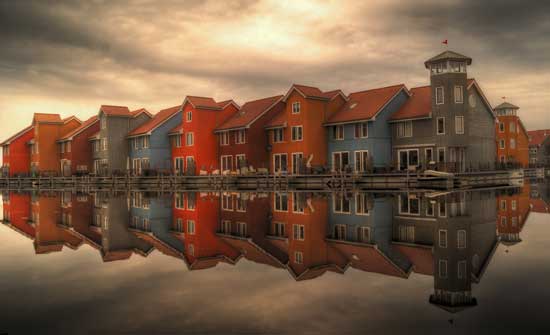
negative space
This composition rule consists of turning around the search for a lot of information in the image. In this type of photography, less will always be more visually beneficial and therefore we usually have very flat backgrounds with a single element that stands out above all else. The minimalist compositions will fall within this type of resource.

The law of the look
The look is a very powerful resource when we work on portrait photography, since it guides the viewer where to look, leaving free space for the viewer to be the one who achieves that feeling of balance and serenity. If this space is omitted, we can generate totally opposite sensations, creating oppression or little freedom.
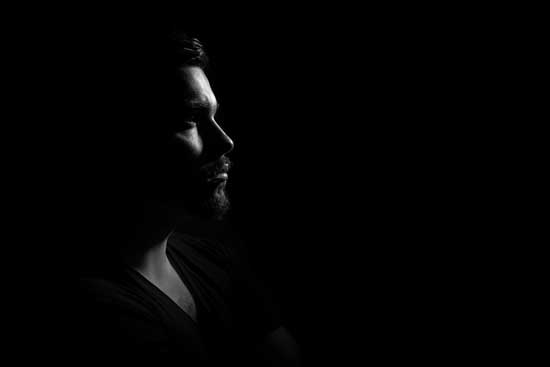
The law or line of the horizon
This compositional resource allows us to divide our frame into three. After that we can highlight either the sky or the earth, occupying two thirds of our image and making it stand out. In this image we see how the sky is the one that occupies the most proportion in the image, making it stand out.
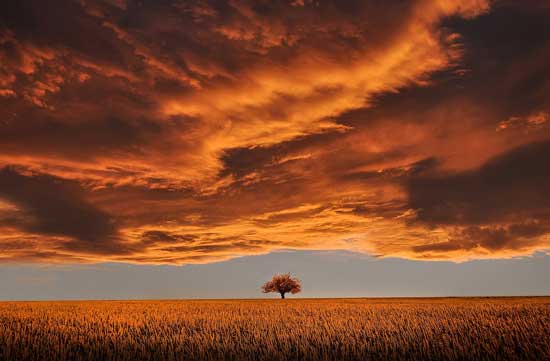
The perspective
Perspective can also help us to play with the framing and intention of our photography. We can use different perspectives such as aerial or linear and this will help our composition to take on different meanings.
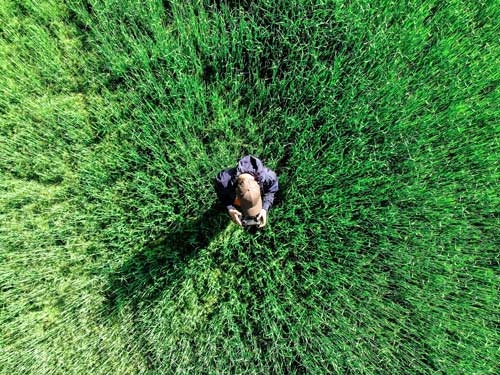
the use of lines
Lines can also help you compose a certain way in your photos and videos. You can help us be the guides that act as visual arrows for the viewer, directing interest. In addition, it will not be the same to use straight lines causing tension than to use horizons that give a more calm sensation.
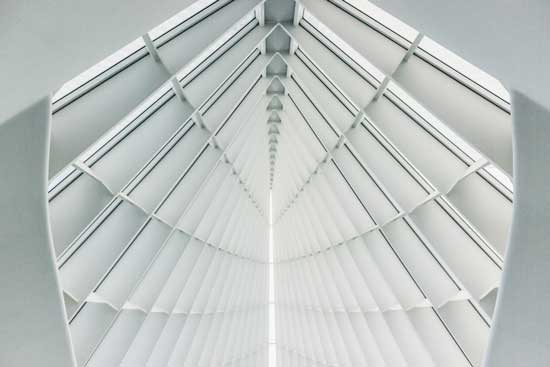
the vanishing point
When we use the vanishing point as a resource we will have to look for a point where a series of oblique lines converge. They could be visually real or even imaginary, but the composition must reveal lines that are parallel to the infinity of the image. This will give our image much more depth and can give us a lot of play both in photo and video.
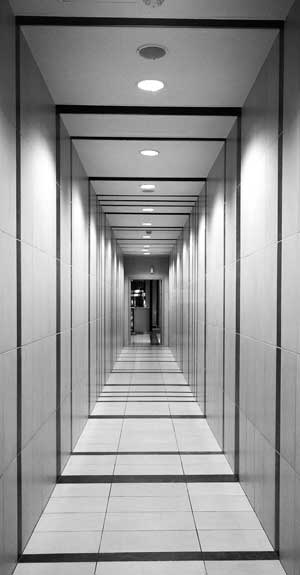
2 Basic elements to compose in photography and video
Any process that we are going to carry out needs prior planning that allows us to have an organization when acting to avoid moments of chaos or disorientation. When doing a photo shoot, this is essential because despite the fact that many people think that it is just pressing the shutter and that's it, having a guide on how to start working will be essential. We will have to start planning the session to be able to know what material we will need, human equipment, locations, costumes, permits... Everything will also be complemented with times to know the times in which we will record and thus estimate session time as well as fees. Having everything well planned and indicated will avoid problems and misunderstandings later.
When we want to record a video we also have to be organized and mark a series of elements that we must take into account for a good result. The most important thing is to organize the recording from the beginning, otherwise think about the chaos of going anywhere to record a video that you only have in your head as an idea. The best thing is that you think about whether it will be an indoor or outdoor recording, what materials you will need, what plans will be the most appropriate and the order of recording, elements that will appear... All this will make you feel more secure when making the recording and the possibility of unforeseen events or failures is reduced. Keep in mind that the more control you can have over the environment in which you will record, the better, that is, a closed room or studio is not the same as recording in the middle of the city with its light, noise,
Once you have a general guide to start composing in photography and video, we will take into account the basic elements that will make up our content. Here we highlight the presence of light, color and even sound in the case of videos. They are components with which we will have to work through different variables that, although they can be adjusted in post-production, are vital to take into account in the production phase while we are doing it.
We are going to see different basic elements that we have to take into account when taking photography and video.
Diaphragm Aperture
The diaphragm will be the part of our camera that regulates the amount of light that enters our sensor through the lens. Normally its opening is measured in F/X and thus we will know what is the opening in which we are and the maximum and minimum that a certain objective has. If we have a low f/ value, more light will enter and if we have a higher f/ value, less light will enter. So an f/2 lens will let in more light than an f/22.
For this reason, when working with a lens, we will have to take into account its possibilities of letting light in, since we will need one that lets in more light if we are going to work at night than if we are in broad daylight.
shutter speed
It is the speed at which the camera shutter closes. If we adjust a fast shutter speed, a short exposure will be created, that is, light enters for a short time; if we set a slow shutter speed we will have longer exposures and therefore light will enter for longer.
If we want to capture moving images and freeze it we will need faster shutter speeds, if we want to apply it in darker environments or leave motion trails we will use longer exposures.
It is very important to use a tripod in longer exposures to avoid movements in the image.
ISO
The ISO is a scale that includes the photographic sensitivity that has been used since 1974. It will indicate the amount of light that the camera will let in and is essential for exposure. The aperture of the diaphragm, the shutter speed and the ISO make up the exposure triangle and this will allow us to configure both the lightness and the darkness of our photos and videos.
The difference between the ISO and the other two elements is that it does not let more or less light pass through the sensor normally, but rather it does so artificially. Let's say that if we do not work with Aperture and Shutter Speed, and only apply high ISO in low light conditions, this setting will intensify the signal by forcing the amount of light in the image digitally and creating the hated grain or noise in the image.
That's why always use the ISO in low values and work with other settings to compensate.
The color
Color is really important as a compositional element and it will give a lot of strength to the value of our composition. Within the color we can play with its different shades to arouse an infinite number of emotions because warm tones will be the same as cold tones or use harmonious or complementary colors. Everything will depend on the weight we want to give in our composition and the value it wants to contribute. Play with color and even its absence to improve your photography and video composition.
The objective
The objective that we use in our cameras will be essential since it is the part of the camera that will direct the rays of light towards the sensor. Depending on the type of objective and its characteristics, we will obtain different images. Always look at the following elements when choosing an objective:
- diaphragm maximum opening
- Minimum and maximum focal length
- Lens type (fold eye, wide angle, intermediate zoom, telephoto, macro, 50mm, all-terrain).
So, for example, for portrait shots where we want very blurred background effects, we will use a 35mm, 50mm, 85mm or a 105-130mm for really satisfactory effects. If you work from your mobile, the best known "Portrait mode" will surely appear to achieve this effect in a more automatic way.
Location
The location where we do our photography or video recording session is key. The location may determine the light and context of your piece and that is why it is important to mark it well in the planning phase. It will always be more appropriate to choose a location that can be well controlled by you, it will not be the same to record in a city at rush hour than to record at home. Always keep these things in mind because they will determine the material, time and unforeseen events that may occur.
material support
It is important that you take into account the fact of creating backup copies if you can during the shooting or the session, always carrying extra storage material and in post production also creating regular copies of everything that we edit and finish.
3 Tips for taking quality photography and video
Practice to spot a good photograph
The best thing you can do is go with your camera and look through it at different times and places looking for that image that awakens something inside you. In addition to seeing material by other authors, practicing and taking a lot of photography and video will help you find that moment when we must press the shutter or hit the rec.
Always take light into account
Light is one of the essential components for photography but it will also be for video. When photographing or recording, we must play with different settings such as Shutter, ISO, aperture or Speed to achieve a correct exposure, that is, adequate light levels. We will need to get as close as possible to a well exposed image so that all the details within highlights and shadows are well defined. Playing with light will give us different results that will affect aspects such as depth of field or image noise.
Also play with light in different situations and test the limits of your camera and the possibilities of your creativity. Take pictures during the day, at night, at sunset, with rain, snow...
Check the basics
Review the previous chapter and practice with the basic elements as much as possible to be able to adjust your image and video in a faster and more correct way. Work and practice the aperture, shutter speed and ISO to understand the exposure triangle and apply it correctly.
Have a preference for Manual Mode
You have to lose your fear of manual mode on your camera since that way you can learn and understand how photography works and the different basic adjustment elements. The most current mobile phone models already include manual mode or professional mode for photos and video in their cameras.
Use uncompressed photography and video
The RAW or raw format allows you to take photographs in a type of raw format with all its raw data. This type of file will not be compressed and will allow us to later be able to make editions with all the real information.
In the case of video, we will have a container format such as MP4, AVI or MKV and then a codec that will apply the type of compression. When Codec is not chosen, it is usually applied in RAW or raw, but it is normal that a codec is applied. Depending on the camera, one or the other will be automatically applied and sometimes we could modify it.
In the case of mobile cameras, you will have to verify which container format and which codec is applied, as well as the resolution that they promise to give in each type of file to take it into account.
Hold your camera tight
Whether it's a more professional camera or your own mobile phone, holding it well will be key to preventing our photos and videos from coming out blurry.
Using bolsters like tripods will be important for more professional looking photos and videos with sharper details.
Don't be afraid to apply creative techniques
You don't have to always follow all the established rules and patterns, lose the fear of looking for original angles or techniques. Using the mobile camera allows us to take it anywhere and even place it anywhere, play with it and get original images and videos.
ask for opinion
Although each author has a different vision, you can ask different people around you and outside what they think of your work. This way you will accumulate criticism and opinions that can give you more ideas and achieve a self-criticism that will make you improve.
Take care of the focus
Many times while taking photography or video we do not look precisely enough and we find ourselves with works that are even completely out of focus. This can be an error for which little can be done afterwards, so it is best to take care of the focus before pressing. In addition, the approach can give you play when it comes to focusing different terms in your photographs and videos, both depths and different protagonisms.
Natural light as an ally
If you have little material and budget or your time is short, using natural light can be a very good option. With natural light you will have the whole scene illuminated and it is also free. Use different times of the day for different natural light and even play around with different sources like windows. In addition, on days with clouds, they may act as natural filters that partially diffuse our light, making it less harsh.
Be careful with backlit shots if they don't have a justification, otherwise it won't look very good aesthetically. For planes where you want to highlight silhouettes in a specific way, it is recommended, but it is better to avoid it.
The detail plan
Many times in videos or photography we tend to collect very general plans with all the possible information. Although these plans are very useful to us, we must also try to close those plans and even look for detailed plans that give us precise information but with a high narrative value that provokes emotions in the viewer.
Avoid too long shots
When we record videos, it is very common to tend to record too long shots that will not be used later. Imagine 4-minute shots where only later you will take advantage of 5 or 10 seconds, since it will be a time spent filming that is not very fruitful. For this reason, in planning it is important to detail these aspects and although it is always appropriate to record a few seconds at the beginning and end, avoid extra long and meaningless shots. If you are going to do these long shots with camera movements like a tracking shot or even a time-lapse here these longer shots could be interesting.
If the videos are also oriented to social networks, it is normal that you look for shorter shots and with longer pauses that can be spliced in editing.
don't forget the sound
It is common to find video recordings whose audio has not been taken into account and then it is not salvageable. That's why never forget the importance of sound, it is recommended that it be recorded in an independent source with a microphone and then edited individually. You will have to make a signal in both recordings at the same time to synchronize audio and sound (the well-known clapperboard) later in editing and editing.
If we talk about your mobile you can add higher quality microphones than the camera itself and thus achieve cleaner and more professional sounds. Avoid places with a lot of ambient noise or getting too close to the microphone if you speak into it.
The edition will always accompany you
Editing and editing in photography or video will be an essential companion if we want our results to obtain the highest exponential quality possible. Even if you see a result that you like, always use editing to try different editing techniques and methods to get better results. This invested time will be rewarded with photographs and videos with a more professional result. Here Lightroom Mobile will be a more than interesting option to get results.
In this way, we can already take into account different elements before taking our photos and videos and once they fall into editing applications such as Adobe Lightroom Mobile.